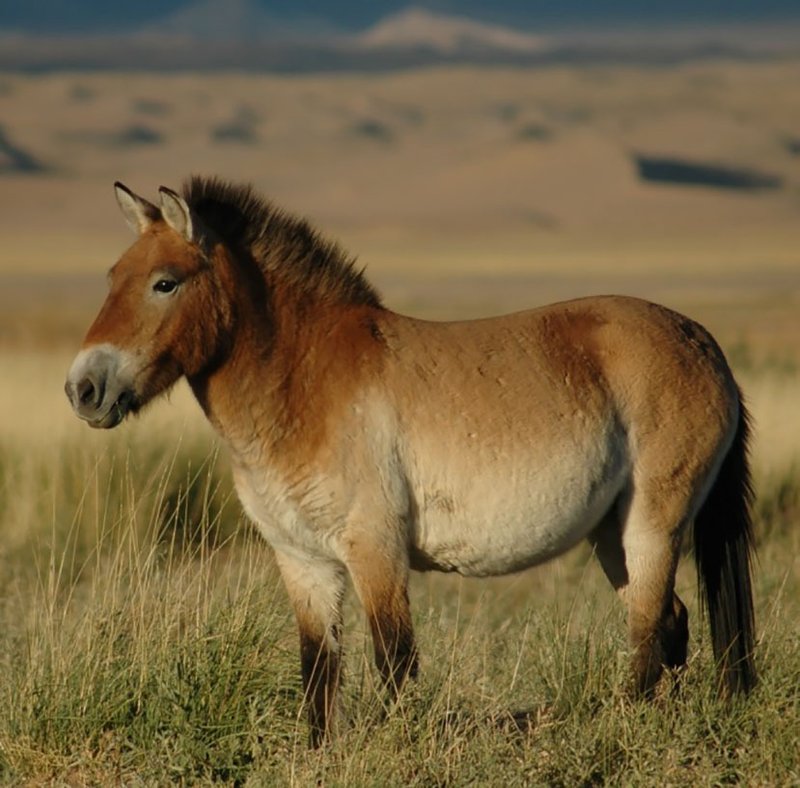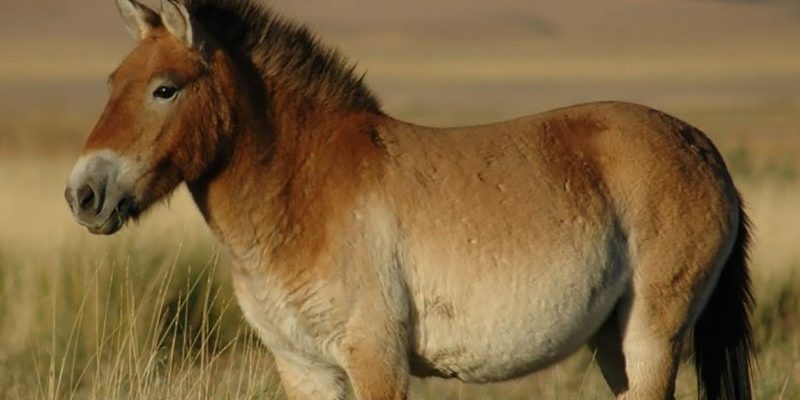
The Przewalski’s horse, or *Equus ferus przewalskii*—try saying that three times fast!—is known for its sturdy build and wild spirit. Once thought to be extinct in the wild, it has made a remarkable comeback thanks to conservation efforts. However, misinformation can still cloud its narrative, making it crucial to unravel the truths about this incredible animal. So, let’s explore some of the most common myths and misconceptions surrounding the Przewalski’s horse.
Myth 1: Przewalski’s Horse Is a Domestic Horse
You might be surprised to learn that the Przewalski’s horse isn’t just a regular horse that wandered off into the wild. Here’s the thing: it’s a distinct species that has never been domesticated. Unlike domestic horses that have been bred for specific traits and are often more docile, the Przewalski’s horse is known for its wild nature and strong instincts for survival.
What sets them apart even more is their unique physical characteristics. Przewalski’s horses typically have a stocky build, with a short, thick neck and a thick mane that stands upright. They also have a distinctive dorsal stripe running down their back, which adds to their wild charm. While domestic horses come in various breeds and colors, the Przewalski’s horse maintains a consistent tan or yellowish coat with a dark stripe.
So, when you hear people say they can just be trained like a regular horse, remember that this species thrives in the wild where they have adapted over thousands of years to thrive in harsh environments.
Myth 2: They’re Extinct in the Wild
Another common myth is that Przewalski’s horses are extinct in the wild. While it’s true that they faced extinction in the mid-20th century, thanks to rigorous conservation efforts, they have made a comeback! It’s almost like a classic underdog story, isn’t it?
In the 1960s, the last of the wild Przewalski’s horses were captured and bred in captivity. Since then, breeding programs have been successful, leading to their reintroduction into their native habitat in Mongolia. Today, it’s estimated that there are over 2,000 living in the wild. Although they are still considered endangered, their numbers are slowly increasing.
You might wonder how they are faring in the wild now. Conservationists have worked hard to create protected reserves, enabling these horses to roam free and thrive in their natural habitat. This comeback story is a testament to how concerted efforts can help save a species from the brink of extinction.
Myth 3: Przewalski’s Horse Is a Direct Ancestor of Domestic Horses
People often think that the Przewalski’s horse is a direct ancestor of domestic horses, but that’s a misconception worth clearing up. Let me explain: While both species share a common ancestor, they diverged from each other millions of years ago. The lineage of domestic horses comes from the *Equus ferus* lineage, which split from the Przewalski’s horse lineage long before domestication began.
The fascinating part is that Przewalski’s horse has retained many primitive traits that are not seen in domestic horses today. This makes them incredibly important for understanding horse evolution and genetics. For scientists, studying Przewalski’s horses offers valuable insights into the history and development of equines as a whole.
It’s like finding a living link to the past. If you’re ever curious about horse evolution, looking into the Przewalski’s horse can provide a unique glimpse into how far we’ve come from those wild ancestors.
Myth 4: They’re All the Same Color
You might have an image in your mind of a Przewalski’s horse that’s uniform in color. However, honestly, these horses come in more than just one shade! Most commonly, they have a sandy yellowish-brown color, but there are variations that make them even more interesting.
Some Przewalski’s horses have a much darker coat, while others display lighter shades, especially as the seasons change. Interestingly, their coats can also fade during the summer months. With their darker mane and tail, they possess a unique beauty that sets them apart. The genetic diversity within the species also contributes to these color variations, making them truly unique individuals.
If you ever get a chance to see a herd of Przewalski’s horses in the wild or a sanctuary, take a moment to appreciate their differences. It’s a beautiful reminder of the diversity in nature.
Myth 5: They Can’t Survive Without Human Help
Some people believe that Przewalski’s horses are completely dependent on humans for survival. While it’s true that conservation efforts have played a crucial role in their recovery, the reality is that these horses are adapted for survival in the wild.
In their natural habitat, Przewalski’s horses roam vast grasslands and steppes where they can graze on grass and other vegetation. Their thick coats help them withstand harsh weather conditions, and they possess a strong instinct for finding food and water. They are social animals that often form small herds, which aid in protection and social interaction.
That being said, it’s important to maintain natural habitats and protected areas to ensure their survival. Once they were brought back to the wild, Przewalski’s horses began to thrive again, reinforcing that they are indeed resilient creatures capable of adapting to their environment.
Myth 6: They Are Aggressive and Dangerous
Many people think that Przewalski’s horses are wild and aggressive, but that stereotype doesn’t paint the whole picture. Like any wild animal, they can be protective of their territory and young, but they’re not inherently dangerous. Here’s the thing: their behavior is often misunderstood.
When left alone in the wild, Przewalski’s horses are quite social and engage in playful behaviors with one another. They groom each other, show affection, and form strong bonds within their herds. It’s only when they feel threatened or cornered that they might react defensively.
Understanding their nature is key. If you’re observing them in their habitat, it’s best to keep your distance and let them do their thing. After all, respect for wildlife goes a long way in ensuring harmonious coexistence.
Myth 7: Przewalski’s Horse Is the Only Wild Horse Species
You might think Przewalski’s horse is the only wild horse out there, but that’s not entirely accurate. While it is the only true wild horse species left today, there are other wild equine species like the zebra and the onager (an Asian wild ass).
Each of these equines has its own unique traits and adaptations. It’s fascinating to note the variety among wild equine species and how they thrive in their respective environments. For example, zebras have their iconic black-and-white stripes, which serve as camouflage against predators, while onagers are known for their hardiness in arid climates.
So, while Przewalski’s horse is a significant species with an important conservation story, it shares the wild world with other remarkable equine relatives.
In conclusion, understanding the Przewalski’s horse means separating fact from fiction. This remarkable creature is a symbol of resilience and conservation. By debunking these myths, we can appreciate the richness of their story, their important role in the ecosystem, and the dedication it takes to protect them. Let’s continue to educate ourselves and others about their challenges and triumphs, ensuring that they thrive for generations to come.

